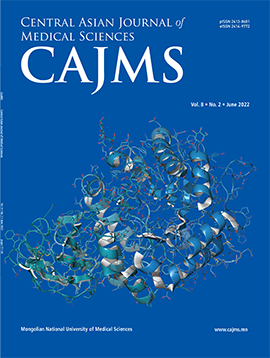The Study of Proton Loss Level in Models of Coronary Heart Disease Deficiencies in an Experimental Animals
DOI:
https://doi.org/10.24079/cajms.2021.03.006Keywords:
Necrosis Factor, Dehydrogenase Inhibitors, Proton-TranslocationAbstract
Objectives: The objective, in this study is to create a pathological model of coronary heart disease in pneumonia, based on the new theory of membrane-redox potentials three-state line system-dependent -full 9 stepped cycle of proton conductance inside the human and animal body, to study the activity of respiratory dehydrogenase enzymes at the ischemic site, and the proton entry state formed by bicarbonate in the 8th stage of full chain for Traditional Medicine. Methods: The experimental model used in this study was a pathological model of myocardial ischemia as developed by Kogan and Ambaga in healthy white Wistar rats approximately weighing 200-250 ± 20g. Results: On days 3-21 of the experiment, we have observed that the proton entry formed bicarbonate decreased by 9.8-13.9% both within the red blood cell membrane surface and outside the red blood cell membrane during whole red blood cell lysis. Moreover, the level of proton depletion was high, but the unstained or cell respiration released area increased by 10.25-20.34% (p < 0.05). Conclusions: In the 8th stage ofthe full 9 stepped cycle closed chain of protons, the proton entry formed bicarbonate decreased in the red blood cell membrane surface, and ischemic standing nodule electron-proton leak and dehydrogenase enzyme activity was decreased significantly.
Downloads
221
Downloads
Published
How to Cite
Issue
Section
License
Copyright (c) 2021 Mongolian National University of Medical Sciences

This work is licensed under a Creative Commons Attribution-NonCommercial 4.0 International License.




